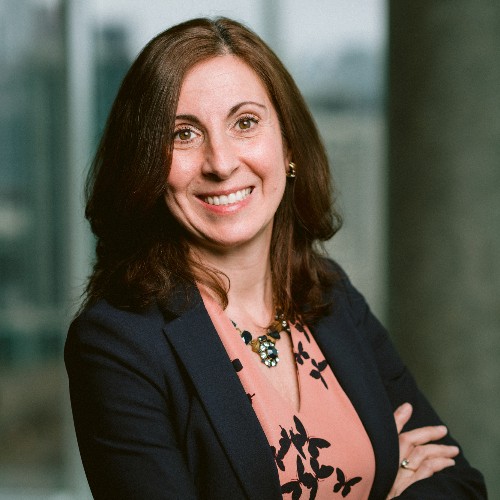This three-part podcast explores how Medical Affairs leaders can navigate and lead through disruption with clarity, structure, and resilience.
We explore how to construct and lead an agile, cross-functional crisis team. From defining roles to ensuring aligned decision-making across Medical, Regulatory, and Commercial functions, this episode emphasizes rapid coordination, internal trust, and shared accountability under pressure.
Moderator: Fran Paradiso-Hardy
Speaker: Bagrat Lalayan
Following is an automated transcription provided by otter.ai. Please excuse inaccuracies.
00;00;00;00
MAPS
Welcome to this episode of the Medical Affairs Professional Society podcast “Elevate”. The views expressed in this recording are those of the individuals, and do not necessarily reflect on the opinions of MAPS or the companies with which they are affiliated. This presentation is for informational purposes only and is not intended as legal or regulatory advice. And now for today’s “Elevate” episode.
00;00;33;09
Bagrat Lalayan
Welcome to the Medical Affairs Professional Society’s Leadership and Management Domain podcast series: “Living in Crisis”. I’m Bagrat Lalayan, VP and Head of Medical Affairs at Legend Biotech. And today, in our second episode, we are diving into one of the most critical topics in organizational leadership: building the crisis management teams in Medical Affairs. With me is my colleague and co-host, my friend, Fran Paradiso-Hardy, Head of Global Medical Communications and Engagement at Astellas. Fran, welcome back.
00;01;08;16
Fran Paradiso-Hardy
Thanks, Bagrat. I’m thrilled to continue this conversation with you. Last time we talked about what defines crisis in pharma and biotech and today let’s focus on who manages it and more importantly, how that team is built before the storm hits.
00;01;26;04
Bagrat Lalayan
Exactly. You know, a world where one unexpected clinical outcome of failure safe is signal or regulatory action can reshape an entire company. Crisis management is an optional. It’s about preparedness and people. The right team can turn chaos in. So clarity. Fran, from your experience, what’s the first principle when building a crisis management team in Medical Affairs?
00;01;54;20
Fran Paradiso-Hardy
I would say that the first principle is clarity of roles. When a crisis unfolds, everyone needs to know why they’re in the room and what decision they own. Medical Affairs, as we’ve said before, operates at the intersection of science, ethics and communication. So the team must blend medical expertise, regulatory awareness, and emotional intelligence together. Most importantly, you don’t want ten people debating. In the end, you want a high performing team where you have every individual executing with purpose.
00;02;33;26
Bagrat Lalayan
That’s powerful. I often say in crisis, confusion is the biggest enemy. So it’s not just about who is on the team. As you said, it’s about defining the command structure. Early on in many pharma and biotech companies, the crisis team includes Medical Affairs, safety, regulatory and sometimes a legal and compliance officer. And each must understand the specificity how Medical Affairs contributes to patient safety data transparency and reputational protection.
00;03;07;03
Fran Paradiso-Hardy
Absolutely. In my experience, the best teams do not form during the crisis. They train before the crisis actually happens. This happens through simulation exercises, scenario mapping, even tabletop drills. These activities build trust and muscle memory. And in the end, when a real event does occur, such as a data breach, an unexpected adverse event, or perhaps placing a trial on hold. individuals should already know how to communicate and coordinate these activities.
00;03;49;00
Bagrat Lalayan
Yes, absolutely I agree, Fran. So let’s unpack that. Many organizations focus on processes and forget the human factor, but crisis management is, at its core, human leadership. Right. Emotional composure, situational awareness. Empathy. These aren’t soft skills. They are survival skills in the crisis. Fran, What do you think distinguishes an average crisis team from a great one?
00;04;19;27
Fran Paradiso-Hardy
Yeah. That’s a really great question, Bagrat. And I would say there’s really, three things that it boils down to. The first is psychological safety on the team. Individuals must feel safe to speak the truth even when it’s uncomfortable. The second is cross-functional trust. When Medical Affairs, clinical or commercial teams show up as one, trust each other’s intent , decisions are faster, better, and smarter. And lastly, I would have to say would be learning orientation. As I mentioned before, great teams don’t just react. They’re prepared. They document, debrief and improve after every incident. And in the end, the best leaders treat these crisis as, classrooms for continuous learning and improvement.
00;05;27;15
Bagrat Lalayan
I like it, that’s so true. And in the middle of a reputational storm, it’s actually the Medical Affairs voice that ensures scientific. Honestly and patient focus, a crisis. First, it seems to the pulse that standards. No shortcuts, no speed. Fran, let’s touch on structure for a moment. How do you balance centralized control with vocal flexibility, especially in, in a global medical service, organizations?
00;05;57;01
Fran Paradiso-Hardy
That’s a tough question. And I’m confident every organization is constantly evaluating this balance between global and local. In my opinion you need to start with that core global crisis unit, a small empowered group that ultimately is responsible for defining the strategy as well as the messaging. But that global crisis unitdoes not have the right individuals that understand local nuances. And that’s why you also need regional and affiliate teams who then can adapt that strategy to their local regulations, culture, as well as their external stakeholders needs and preferences. For example, in Asia or Europe, patient expectations and media landscape are different and this is where local Medical Affairs must translate, not just for language but intent. And that’s why continuous communication channels are key, . Getting these daily crisis huddles, sharing dashboards and providing real time updates is going to be crucial for that Global, regional, affiliate balance.
00;07;29;11
Bagrat Lalayan
Thank you. Mentioning the technology, technology that can amplify that coordination. Today we know that many teams use secure collaboration platforms, share boxes, AI assisted monitoring and digital dashboards to track real time data integrity and external sentiment. But still. Still, it’s the human judgment that connects the dots between information and action.
00;07;56;09
Fran Paradiso-Hardy
Exactly. And I’d like to add, if I can, one more critical element – the crisis spokesperson from Medical Affairs. This person needs to bridge science and empathy – often requiring translating complex data into messages that physicians, patients and regulators can understand and more importantly, trust. So choosing and training that Medical Affairs voice early on will make a world of difference.
00;08;32;14
Bagrat Lalayan
I love that the spokesperson of Medical Affairs isn’t just the communicator, he or she is the moral compass in crisis. And when Medical Affairs speaks with authenticity, even difficult news can strengthen trust. It was a great conversation. But before we close Fran, let’s summarize a few takeaways for our listeners.
00;08;57;12
Fran Paradiso-Hardy
Certainly. So here are our top five. First. It’s critical to define clear roles and responsibilities before the crisis happens. This is not something that needs to be done during the event. Secondly trained together – Medical Affairs, commercial, regulatory – all those critical roles need to be involved. And this can happen through scenario based exercises or other activities. Third, it’s critical to cultivate emotional intelligence and composure in that leadership, especially Medical Affairs leadership. We talked about the balance between global alignment and local agility and delivery. And lastly learning and refining , always comes through debriefing after every event. Treat this as a cycle of learning cycle, not just a one-time fix.
00;10;02;03
Bagrat Lalayan
Great summary. Thank you very much, Fran. And I’d add one bonus principle. Purpose unites teams faster than hierarchy. The mission when everyone unites around patient safety centricity and scientific integrity, we run the toughest crises can become moments of transformation.
00;10;24;12
Fran Paradiso-Hardy
Well said, Bagrat. Crisis. Crisis don’t just test organizations – they reveal their character in the end.
00;10;31;14
Bagrat Lalayan
That’s a perfect note to end on. Thank you, Fran, for another insightful conversation. And thanks to our listeners for joining us on leading in Crisis. The Medical Affairs, Professional Society’s Leadership and Management Domain podcast. Stay tuned for our next episode where we’ll explore decision making under pressure, the science and soul of leadership in crisis. Until then, stay calm, stay prepared, and keep leading with clarity and compassion.
00;11;02;09
Fran Paradiso-Hardy
Goodbye everyone.





